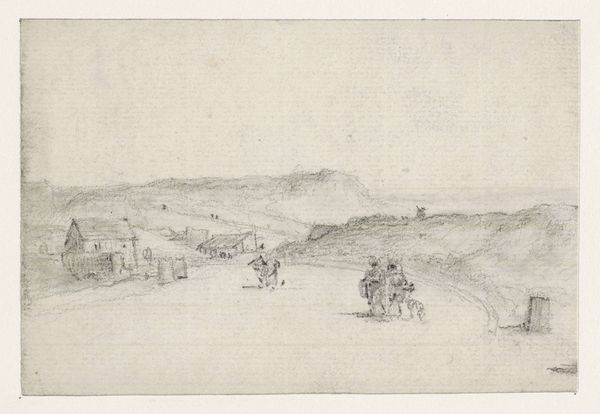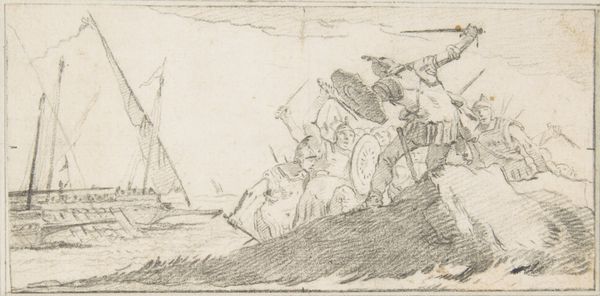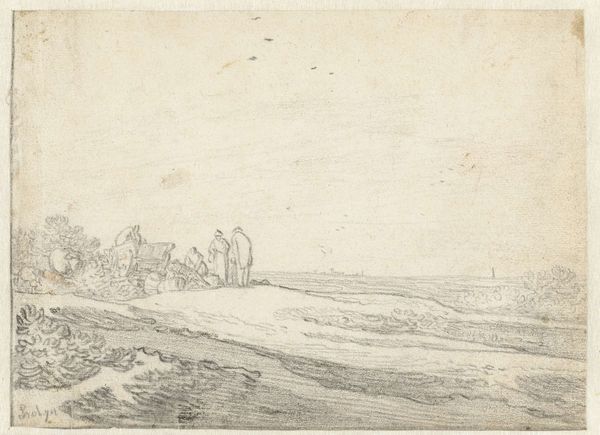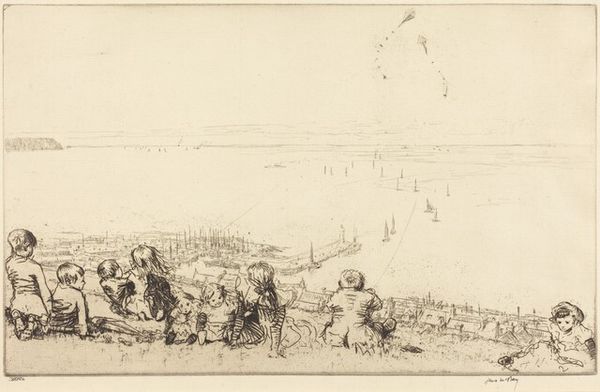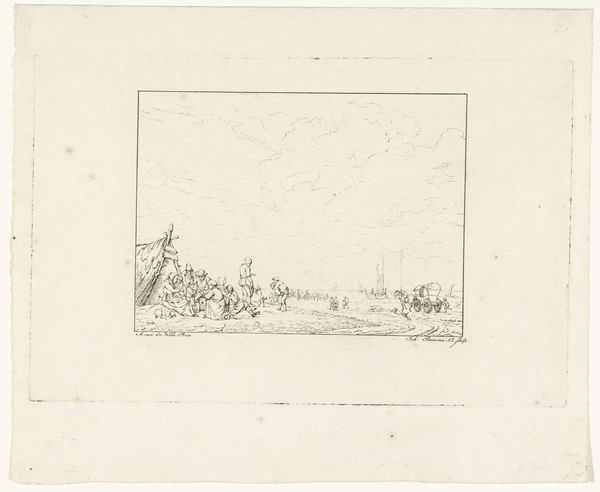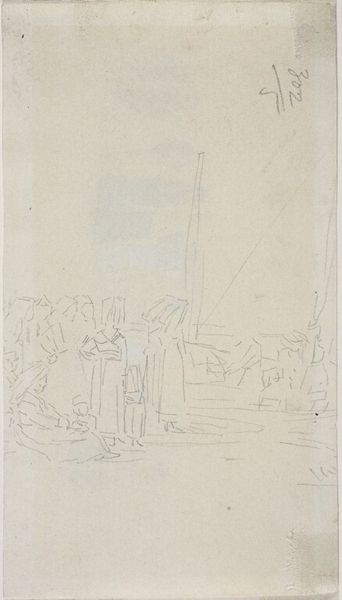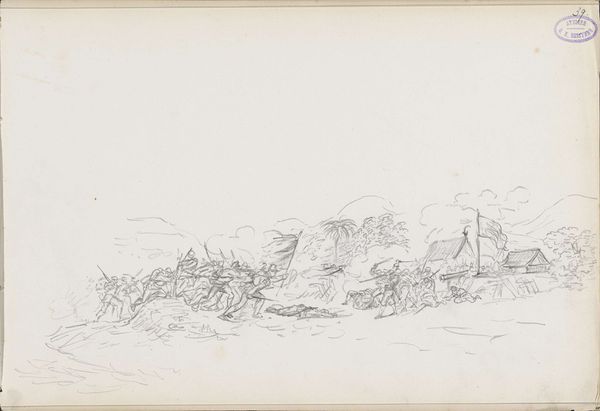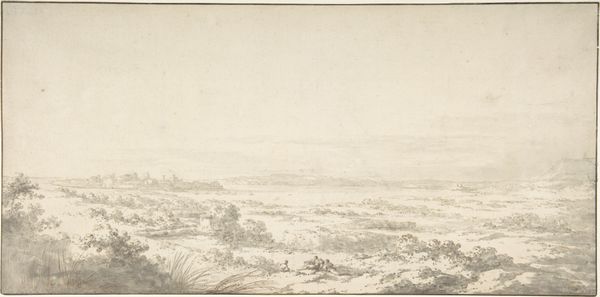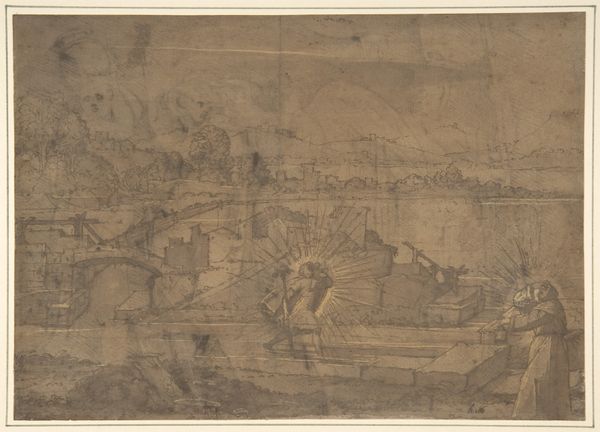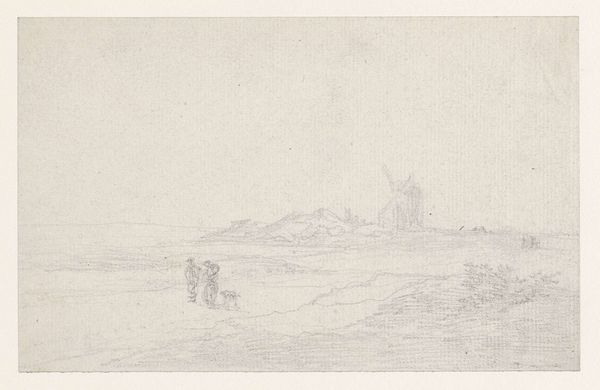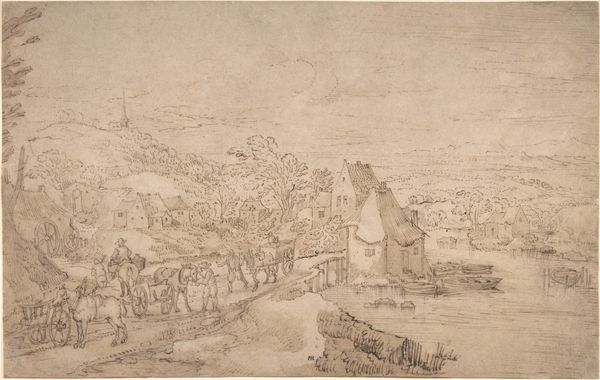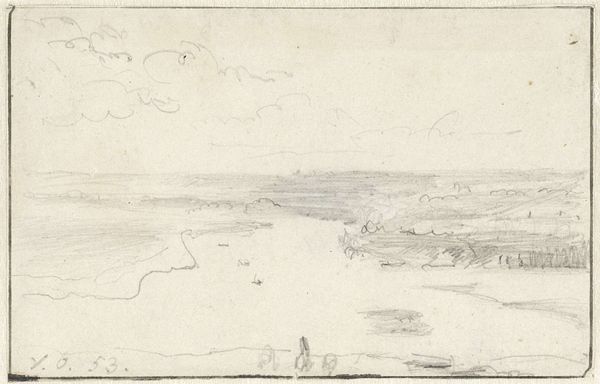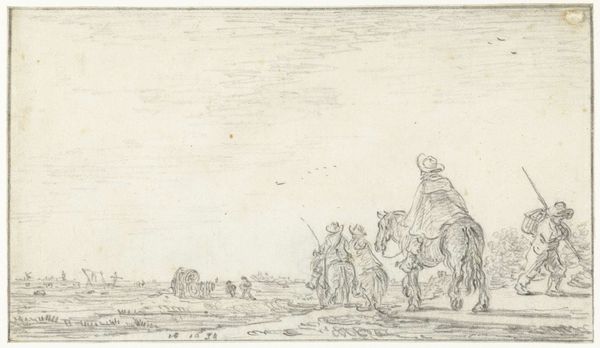
drawing, pencil
#
drawing
#
pencil sketch
#
landscape
#
etching
#
figuration
#
pencil
#
line
#
history-painting
#
realism
Dimensions: height 330 mm, width 557 mm
Copyright: Rijks Museum: Open Domain
Curator: The Frères Moreau, working in the early 1900s, captured a moment from 1672 in this piece, "Oversteek van de Rijn." What strikes you first? Editor: Its ethereality, definitely. Like a half-remembered dream of history. The pencil lines are so light, it's as if the scene might dissolve into the mist at any moment. Curator: It’s a study in grey, isn’t it? I think of the pencil as such an accessible, almost democratic medium. What does it tell us when such an important event is recorded in this way? Editor: Absolutely. You know, the choice of materials is fascinating. Pencil suggests ephemerality, sketches, preliminary studies, not the monumentality we usually associate with historical events of such weight. I'm also intrigued by its reproduction through etching, potentially widening its reach to the common folk of that time. Mass dissemination meets monumental event. Curator: Exactly! The brothers seem interested in something deeper than the pure heroics of the crossing. Look at the sheer mass of figures; they’re almost ant-like. This wasn't some glamorous event for those involved; it was labor, it was dangerous, and that is shown in the figures as just the suggestion of a form. Editor: The implied labour is strong. But you know, this understated quality, this reliance on line, almost invites us, the viewers, to complete the image. There’s a ghostliness to the landscape and figures; it makes you ponder the weight of the event and how these events are filtered through history. How stories themselves are told and become “monumentalized.” Curator: That makes me think about how historical painting, even in its realist mode, has to wrestle with fabrication. We weren't there, the artist wasn't there. All historical depiction involves layers of mediation and interpretation. Editor: True! We are left, ultimately, with interpretations, stories. In terms of process and reception, seeing it as a pencil sketch underscores its constructedness. Not in a pejorative way, but rather the sketch allows for interpretation. This ethereal approach feels much more human than a bombastic battle painting could ever be. Curator: The Brothers Moreau capture both the scope of history and its intimate interpretation. It’s more questioning than declarative, perhaps, a glimpse rather than a definitive portrait of events past. Editor: Yes. Seeing it now, in our present, we too become just another link in its chain of reception, processing our place in an enduring history.
Comments
No comments
Be the first to comment and join the conversation on the ultimate creative platform.
